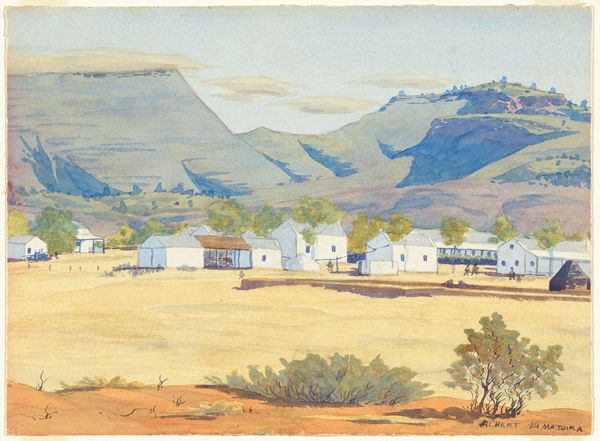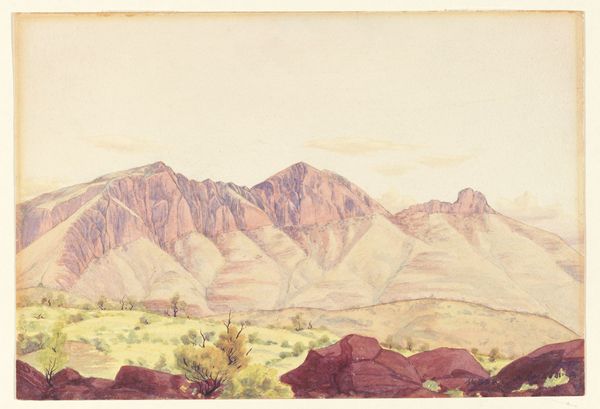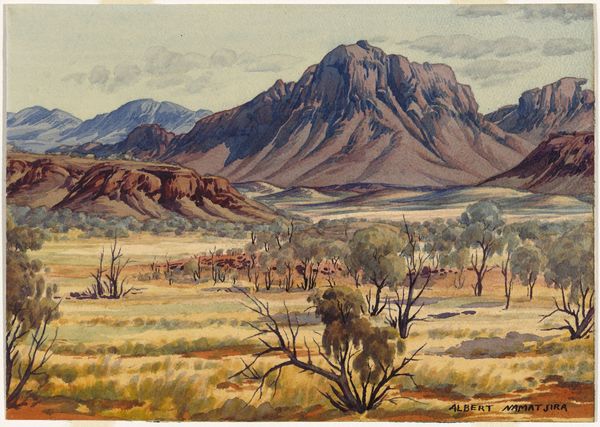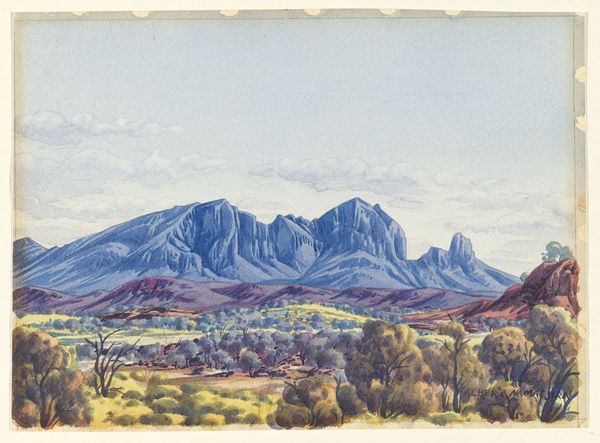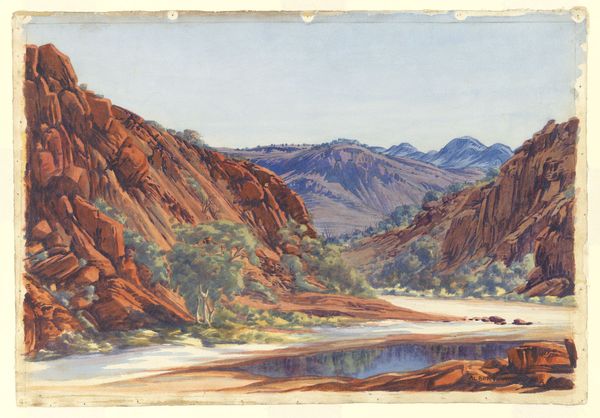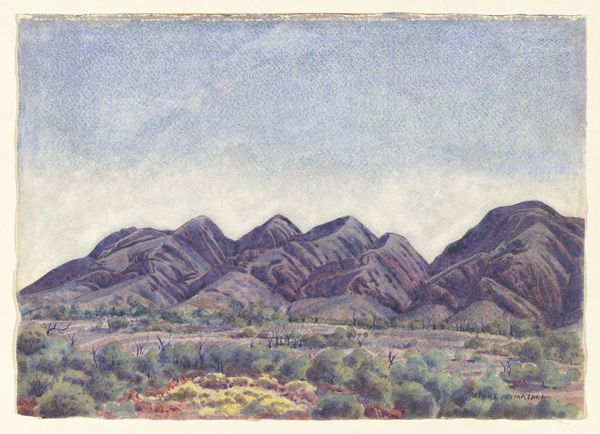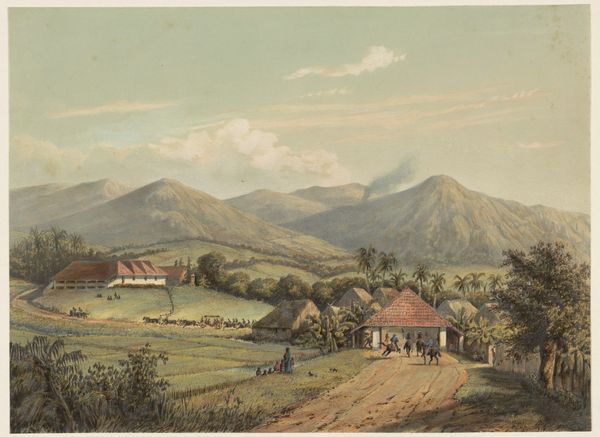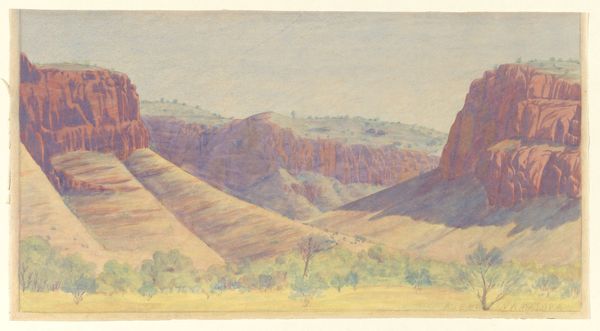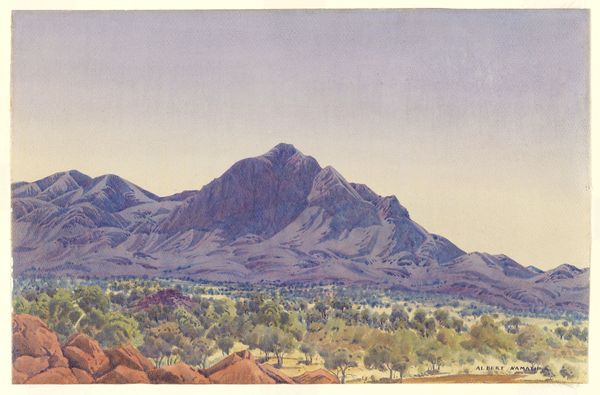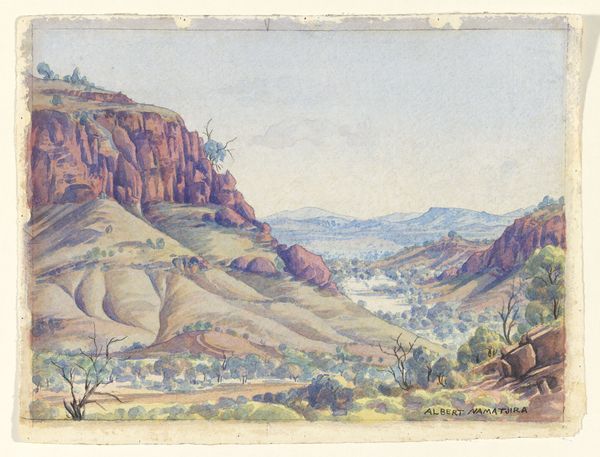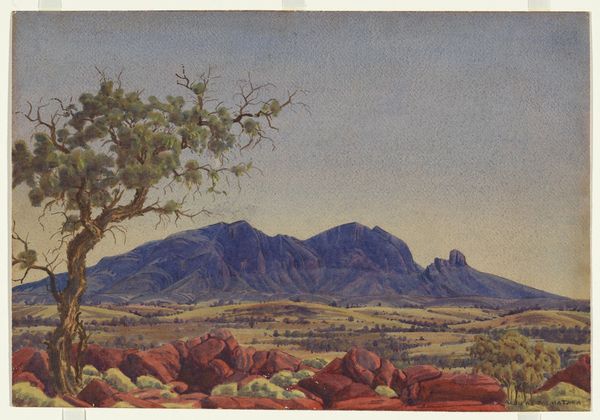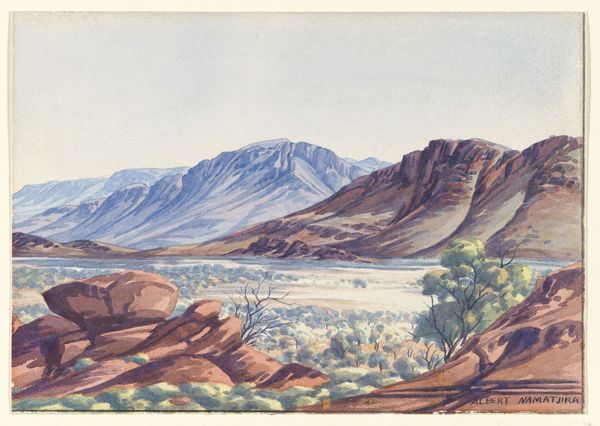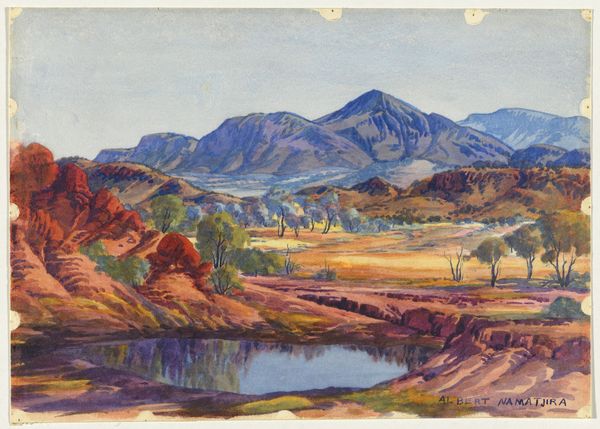
Glen Helen Homestead and Mount Sonder, West MacDonnell Ranges, Central Australia 1940
0:00
0:00
painting, watercolor
#
water colours
#
painting
#
landscape
#
watercolor
#
coloured pencil
#
realism
Copyright: Albert Namatjira,Fair Use
Editor: This watercolor landscape is "Glen Helen Homestead and Mount Sonder, West MacDonnell Ranges, Central Australia," created around 1940 by Albert Namatjira. It evokes such a strong feeling of isolation, even with the homestead included. The color palette feels particularly stark and dry. How do you interpret this work? Curator: That sense of isolation you're picking up on is key. Think about Namatjira’s historical context: He was an Aboriginal artist painting Western-style landscapes in a country deeply entrenched in colonial power structures. What does it mean for an Indigenous artist to depict "the outback" in this representational style? Is it simply documentation? Editor: No, I suppose not. It almost feels… defiant? Like claiming ownership of a narrative that had been denied to his people. Curator: Exactly. And consider the audience. Namatjira’s work was popular with white Australians and tourists, shaping their understanding of the landscape. Was his art then perpetuating a romanticized, even colonial, vision of the outback, or subverting it? Did his success mean assimilation, or a strategic use of the dominant culture's tools? Editor: That’s so complex. It’s not a straightforward act of resistance, but it opens up a space for one. So even his chosen medium, watercolor, becomes a loaded decision. Curator: Precisely. The watercolour technique gives a certain impression of traditional Western art. What are we seeing then when we witness its use in an Australian context? Is Namatjira challenging or affirming accepted cultural norms? Editor: I initially saw just a landscape, but now I recognize the subtle ways Namatjira seems to have navigated incredibly difficult socio-political circumstances. Curator: It prompts questions about art’s public role, and who has the power to shape a country’s narrative. Something I will now reflect more deeply upon in future analysis.
Comments
No comments
Be the first to comment and join the conversation on the ultimate creative platform.
